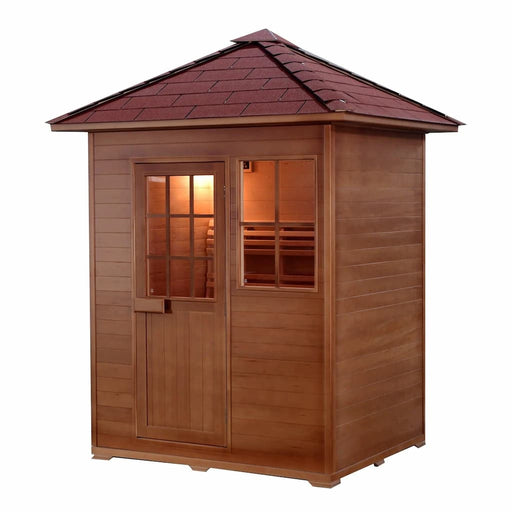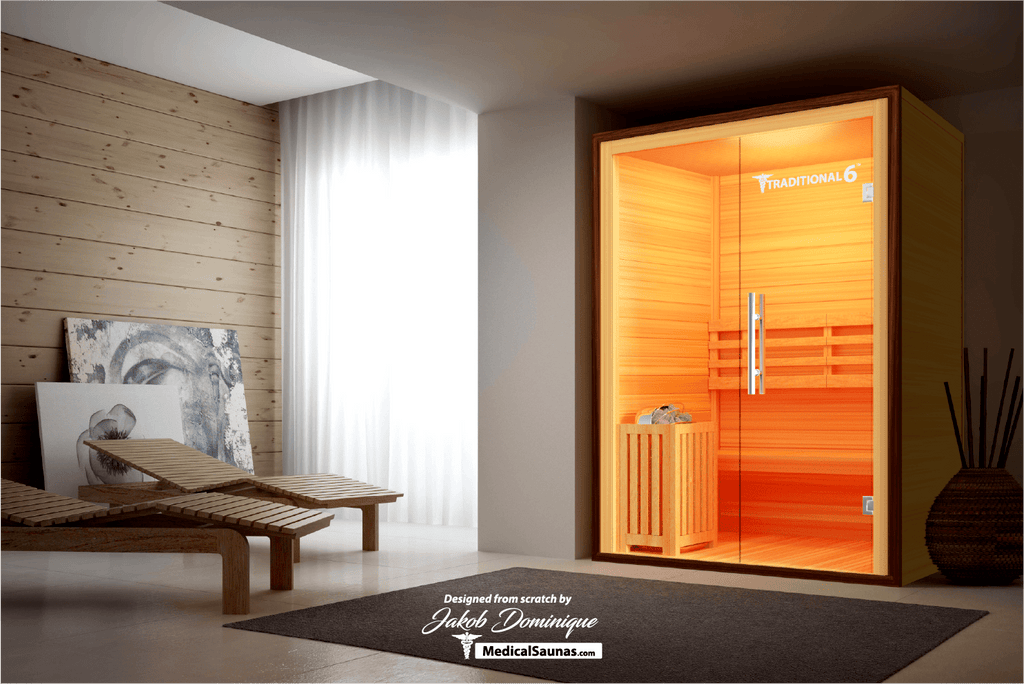The Greatest Guide To Traditional Sauna
The Greatest Guide To Traditional Sauna
Blog Article
Traditional Sauna Things To Know Before You Buy
Table of ContentsThe Ultimate Guide To Traditional SaunaMore About Traditional SaunaThe Traditional Sauna PDFsMore About Traditional Sauna5 Simple Techniques For Traditional Sauna
A lot of the weight lost in a sauna is water loss and is re-gained upon rehydrating. Without a doubt sauna can be a crucial component of a healthy weight loss program. To check out the differences between conventional and IR saunas, I will divide these into proven, academic, and fabricated differences.Thus, the hottest point in the saunawhich goes to the ceiling directly above the sauna heateris usually between 185 and 190 F. Claims that a traditional sauna surpasses 200 F is just not real and not suitable for electric saunas marketed in the United States. The temperature level for a far-infrared sauna is normally set between 120 and 140 F; however, unlike the standard sauna, the objective in and IR space is not to achieve a heat.
Due to this, the temperature difference is nearly irrelevant, because extreme sweating causes both sauna kinds, however the technique of heating up the body is different. In an IR sauna the bather will certainly really feel warm and will certainly sweat profusely, but at a lot lower temperatures (Traditional Sauna). Thus, if the objective is to spend longer amount of times in the sauna, the IR sauna is an excellent selection
When a typical sauna has been effectively warmed, the sauna walls are warm, the air temperature has attained established temperature level and the rocks are very warmed. As a fascinating side note, the heated walls and the rocks are releasing far-infrared warm, integrated with the heated air, to create an "covering warmth".
Getting My Traditional Sauna To Work

When the heat is achieved, the components cycle on and off to preserve the heat. The majority of traditional sauna customers enjoy putting water over the rocks to produce steam to elevate sauna moisture levels. The benefits of putting water over the rocks consist of: making the room much more comfy, dampening the nasal flows, and allowing the use of aromatherapy by blending vital oils with the water.

When the power enters the body, it triggers the body temperature to boost and ultimately causes perspiration. In an infrared sauna it is very important for the emitters/heaters to stay on practically continuously. Because there is no mass of rocks to retain warmth, the sauna will cool if the emitters turned off.
As stated over, the sauna bather in an infrared space wishes to place himself before running emitters to get optimal take advantage of the warm. The heating time for the two spaces can be extremely different, depending on exactly how the rooms are made use of. For a typical sauna, a bather must allow 30-40 mins for the space to accomplish a wikipedia reference preferred temperature and to properly pre-heat the rocks.
8 Easy Facts About Traditional Sauna Explained
A well built sauna will commonly achieve a temperature level of 150-160 F in regarding 30-40 minutes. For hotter temperature levels, the space may need to warm for a longer duration.

Conventional saunas tend to be bigger (hence utilize even more electricity) than infrared saunas, although conventional saunas are definitely offered in one and 2 person sizes. For a two-person typical sauna, 5x6 or 5x7 dimension is most popular. The leading bench can pleasantly seat two or 3 individuals and is also enough time to relax during the sauna session.
All About Traditional Sauna
The ordinary expense per kWH of electrical power in the united state is roughly $0.11, so a 4.5 kW heating unit will set you back about $.50 to run for one hour, if the heating unit why not look here runs constantly for one hour. Normally a sauna heating system will compete 75% of the very first hour and 50% of subsequent hours on because the elements cycle once the set temperature level is accomplished.

There is a hardly ever reviewed distinction in the social experience between the two spaces. While our culture has actually shed several of the social advantage of the traditional sauna experience, it can be extremely socially satisfying (Traditional Sauna). From family members time in the sauna, to heart-felt conversations with better halves, to sauna partiesthe typical sauna experience can bring about intimate mingling
Traditional Sauna - Truths
Many higher end infrared rooms consist of tinted light therapy, sound systems and full-glass fronts.
Report this page